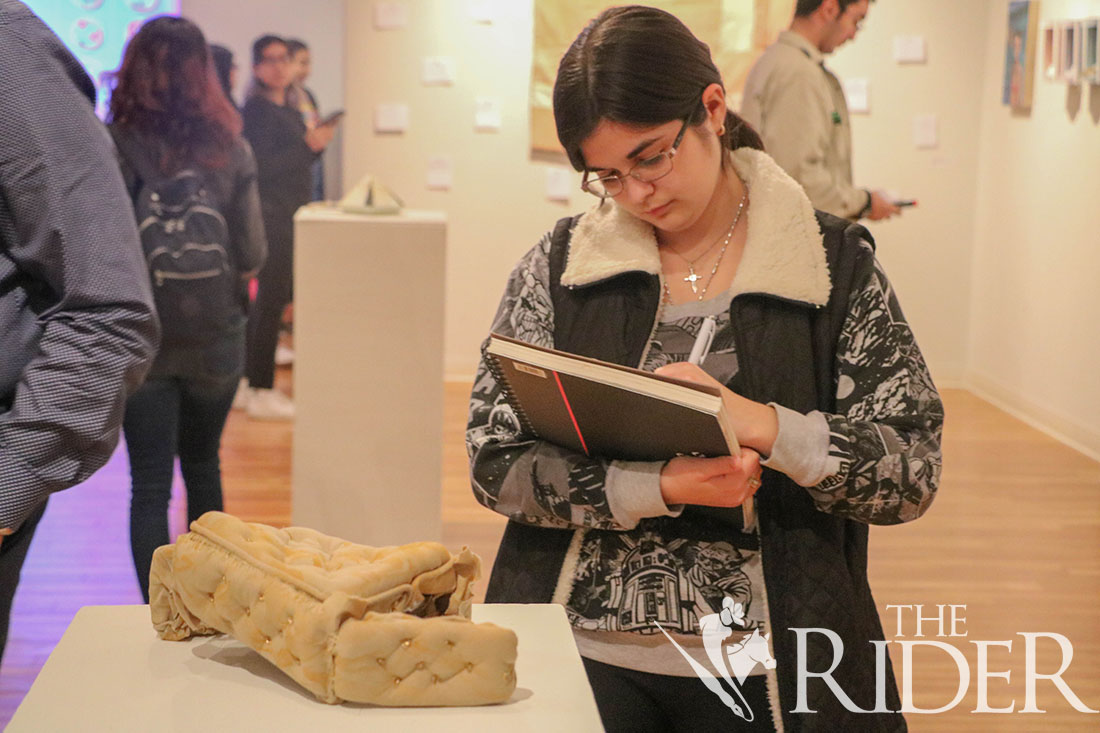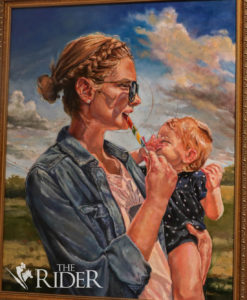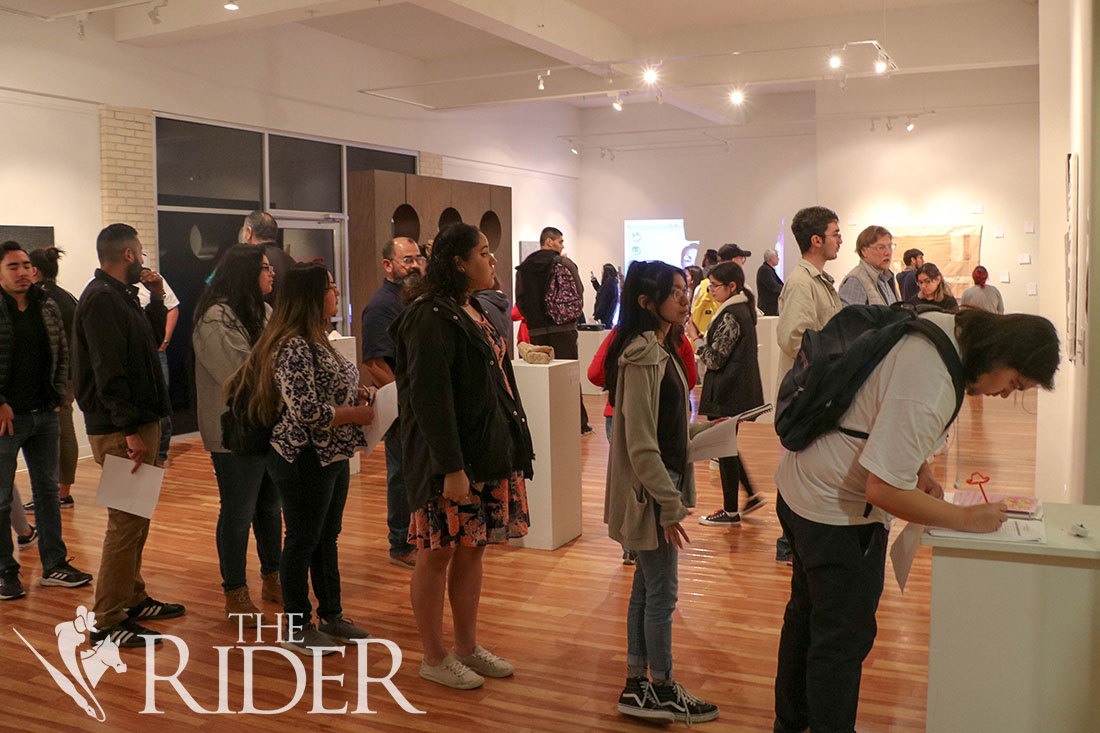
For the first time ever, local artist Marcelina Gonzales inaugurated her curatorial endeavor, “Girl Will Be Girls,” last Tuesday at the Rusteberg Art Gallery on the Brownsville campus.
While being a full-time home health worker, Gonzales continues to work in the artistic field as a curator. She graduated from legacy institution UT Brownsville in 2013 with a degree in art.
After she determined the concept for her exhibition, she started searching for artists whose art could make an impact on her project.
Gonzales emailed the artists to see if they were interested in participating and willing to ship their artwork to the Rio Grande Valley. This process took over a year.
“I really wanted to create a dialogue of female voices from outside of the Valley, because I think it’s important that people here have access to different ideas and emotions and opinions of people who they may not have come in contact with, especially living in the Valley,” Gonzales said.
The exhibit features the artwork of 13 artists from across the United States and one from England:
–Sarah Dolan, Alexandria, Virginia
— Emily Elhoffer, St. Louis
–Marcelina Gonzales, Brownsville
–Jennifer Hartzler, Lewistown, Pennsylvania
–Katie Hovencamp, Carbondale, Pennsylvania
— Ashley A. Jones, Indiana, Pennsylvania
–Kelly Mathews, Chicago
–Rosemary Meza-DesPlas, Farmington, New Mexico
–Melissa K. Mursch, Milwaukee
— Tracy Nunez, New York City
–Grace Payne, Bristol, England
–Lili Von Shtubb, Los Angeles
–Skyler Simpson, Salt Lake City
–and Lucy R. Valena, Boston
Gonzales decided to include her artwork, titled “Let’s See What That Mouth Can Do!” as she realized she had extra space in the exhibition. She wanted to emphasize the vulgarity that men use toward women, such as catcalling them on the streets.

“It’s almost like women are pieces of meat, so it’s just a female’s head, kind of like an animal hanging on the wall, and she has tags on her like she’s for sale. She’s a piece of meat and she’s discounted also,” she said. “Her tongue is sticking out like a dead cow, she has no voice either. So, it’s about empowerment through sarcasm.”
Mursch attended the opening reception. Her daily job is working at the Milwaukee Institute of Art & Design as an admissions counselor. In her spare time, she creates art, teaches workshops and curates shows.
Mursch received a bachelor of fine arts from the University of Wisconsin-Milwaukee Peck School of the Arts. Through studying and by her self-taught practices, her strength involves working with fibers.
“A Womanifesto of Sorts” is a piece of writing that she embroidered on a cloth and is portrayed in a wooden frame.
“It’s kind of talking about how, ‘I am so small, and like, what can I do?’” she said. “But I’m doing what I love and I’m hoping, by putting messages in it, that I can help spread it to other people and get them talking … and thinking about it.”
“Can I Guess Your Nationality?” is a quilt created by dyed fabric and embroidery floss as a research project in which she asked people to guess her nationality, according to Mursch’s website.
“It’s about my nationality and what I come off as to other people, so that one is kind of trying to break down barriers between different nationalities,” she said.
Valena also attended the opening reception. She began creating art when she was 3 years old.
“My artwork explores my identity. … I tend to make a lot of really angry self-portraits and I tend to combine sculpture and drawing and painting to … trick the eye, basically,” she said.
Two of her embroidery fabric self-portraits are displayed in the exhibition.
“Surfacing” is a thread on wood using polyester fiberfill. “Dogwhistle” is a thread on canvas using the same polyester material.
“I’d like to invite the viewer to think about … their own experience of themselves,” Valena said. “I find that we’re all just trying to search for our own selves all the time; it’s a daily process and I hope that the viewer takes away that as well, that invitation to continue to search.”
Other types of artwork displayed are soft sculptures, oil paintings, installation work and 3D in the round sculpture.
More than 50 people attended the reception.
“It’s important … especially with how things are nowadays, like how people oppose the ideas of women empowerment and feminism because they … see drastic and very radical extreme ideas that maybe don’t represent it the best way possible,” UTRGV art education junior Isamar Ibarra said. “I think it’s always good to try to understand, and, like, art is a good way to try to understand. … It’s very visual, so it makes you think. … You have to kind of reflect on your own.”
The exhibit is open until Feb. 14 at the Rusteberg Art Gallery on the Brownsville campus. Admission is free.







